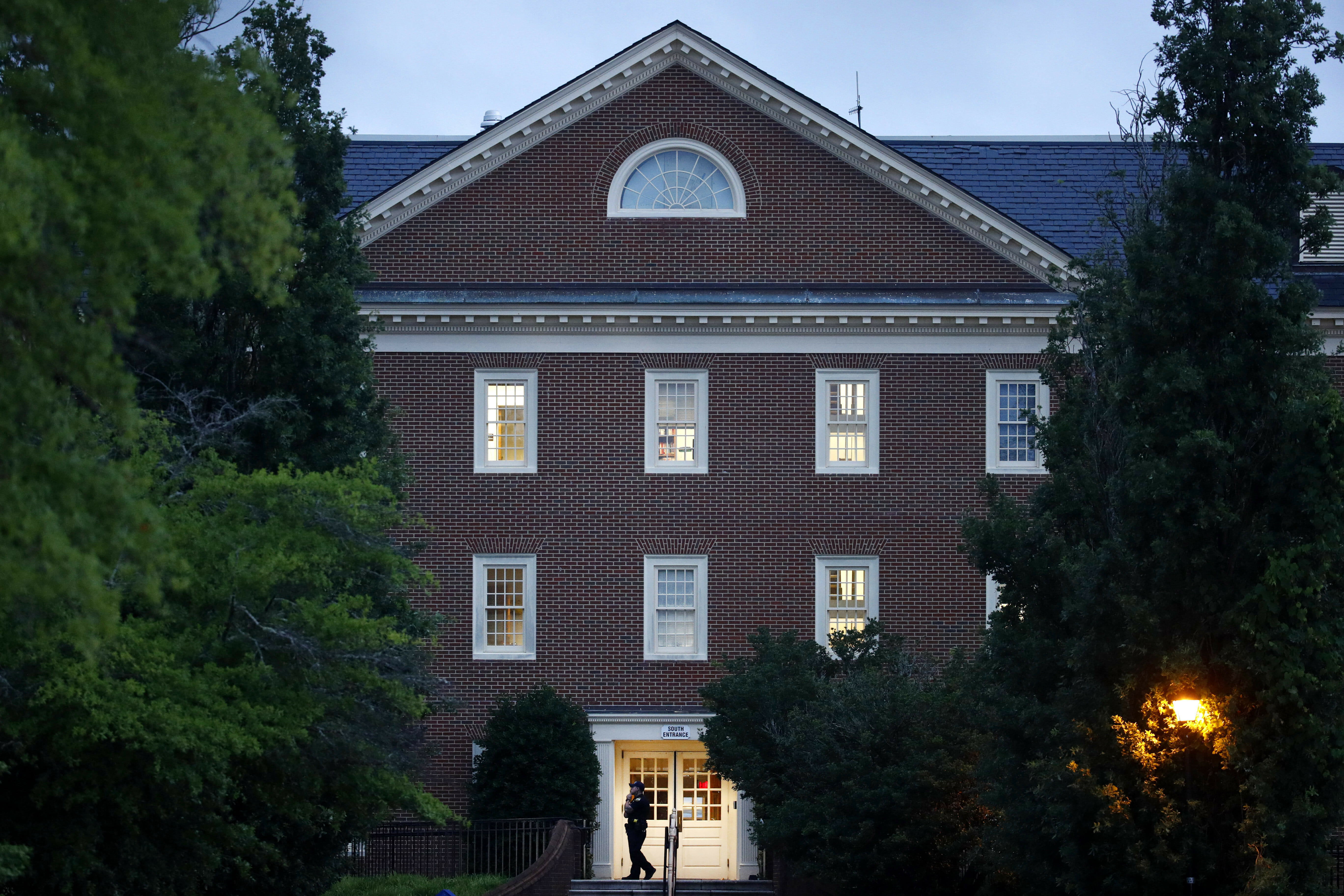
Mass shootings in the workplace are rare and puzzling
A postal worker on disability retirement for psychological issues returned to her workplace years later and killed six people. A Connecticut beer delivery worker irate over being forced to resign opened fire as he was being escorted out of the building, killing eight co-workers. Just a week ago, a longtime municipal engineer submitted his resignation in the morning and within hours went on a rampage inside the building, killing 11 co-workers and a contractor.
The Virginia Beach killing is one of 11 mass workplace killings dating back to 2006 in the U.S., according to a database of mass killings maintained through a partnership between AP, USA Today and Northeastern University.
In all, nearly 90 people have died in these mass shootings, which are defined as 4 or more people killed, not including the perpetrator.
And while such workplace shootings remain rare among the tens of thousands of gun deaths each year, they resonate among Americans who worry they might become an aggrieved co-worker’s next victim.
The phenomenon steadily seeped into the public’s consciousness following a series of workplace massacres, including a big one at a post office that eventually led to the term “going postal” being coined in the 1990s. The U.S. Postal Service went to great lengths to examine the issue and dispel the notion that its workers were more prone to violence.
Here are some of the key takeaways from the data:
WHAT ARE THE REASONS PEOPLE KILL CO-WORKERS?
Several factors have led up to these mass killings: they include disagreements on the job, feeling mistreated by bosses and colleagues and anger in the aftermath of court proceedings.
“Most of the time there are all sorts of signs of what the grievances were,” said James Alan Fox, a criminologist with Northeastern University who has studied mass killings for decades.
Some shooters left behind letters complaining of unfair treatment. In the case of the mass shooting at a Manchester, Connecticut, beer distributorship, the gunman called 911 as police closed in and told the operator that he had experienced racism at the company and wished he’d killed even more co-workers.
While the investigation is still young, the gunman who last week carried out the attack at the municipal building in Virginia Beach stands in stark contrast; seemingly well-liked, in good standing with his employer and had not voiced any grievances.
Of the 11 workplace shootings tracked in the database, the most lethal was not the result of a workplace grievance. A radicalized couple carried out the attack against the husband’s co-workers at a holiday party in San Bernardino, California, killing 14.
WHERE DO MOST OF THESE WORKPLACE KILLINGS TAKE PLACE?
The shootings by employees have occurred in a variety of locations: a military base, warehouses, catering company, beer distributor, RV part manufacturer and plastics company among them.
The data show that the four workplace killings with the highest death toll happened in government offices or at a government work event. However, criminologists who study gun violence caution that the number of workplace shootings is too small to draw reliable conclusions.
The government shootings include 13 killed at a military base in Fort Hood, Texas, and 12 at a Navy Yard in Washington, D.C.
“There are so many questions we don’t have any answers to,” said Susan B. Sorenson, a professor at the University of Pennsylvania and director of the Ortner Center on Violence and Abuse in Relationships. “The reality is there are millions of people who go to work every day in government buildings and millions of people who go into government buildings every day. And almost every single one of them goes home safely.”
WHAT HAPPENS TO THE SHOOTERS?
In nearly every case, the shooter killed himself or herself, or was killed by police at a higher rate than other types of public killings, where gunmen were more likely to be arrested.
Out of the 11 cases, the only gunman who survived is Maj. Nidal Malik Hasan, an Army psychiatrist who was sentenced to death for the Fort Hood massacre.
The gunman in Virginia Beach was killed in the shootout.
Nearly all the offenders in workplace killings were men. However, the shooting in San Bernardino was carried out by two killers, one of them a woman who accompanied her husband. And in Goleta, Calif. in 2006, the former postal worker who killed seven people was a woman.
WHAT IS THE HISTORY OF WORKPLACE SHOOTINGS
Mass workplace killings have been happening for decades in the U.S. and around the world, gaining widespread attention in the 1980s and ’90s.
One of the deadliest was carried out in 1986 by a mail carrier who killed 14 Postal Service colleagues in Edmond, Oklahoma. That incident and others prompted the Postal Service to commission a study in 2000 to examine workplace violence around the time that the term “going postal” was becoming a conversational term.
The Postal Service called it “the most comprehensive survey ever conducted of workplace violence in our nation,” including focus groups, interviews with employees and lengthy examination of policies. The report issued several recommendations to flag violent tendencies while claiming that “going postal” is a myth and that postal employees are less violent than the national workforce.
___
Associated Press data editor Meghan Hoyer contributed to this report.
The Western Journal has not reviewed this Associated Press story prior to publication. Therefore, it may contain editorial bias or may in some other way not meet our normal editorial standards. It is provided to our readers as a service from The Western Journal.
Truth and Accuracy
We are committed to truth and accuracy in all of our journalism. Read our editorial standards.
Advertise with The Western Journal and reach millions of highly engaged readers, while supporting our work. Advertise Today.












